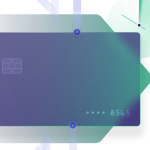The last decade has seen a complete revolution when it comes to how we make purchases. Digital payments are expected to approach $7 trillion by the end of 2021, representing a massive jump from previous years, and mobile payments in particular are expected to double by 2025. Between the proliferation of RFID chips, explosive mobile app development, and the rise of newly crowned industry giants such as Square and Venmo, the digital B2C landscape is an exciting new place compared to the previous century, or even the previous decade.
However, there is one sector that has been left behind in the fintech revolution: B2B payments. With some noteworthy exceptions, embedded or B2B payments are locked into old-school, high-friction payment protocols, being made to jump through inflexible and time-consuming hoops by legacy financial institutions.
Of course, when smart investors detect a neglected share of the market, they smell opportunity. There is a great deal to be gained by removing the friction from B2B payments and modernizing traditional financial systems through embedded, next-generation payment technology—in fact, it’s estimated there is more than $1 trillion in value to be unlocked by 2030 through improved B2B payment systems, according to Goldman Sachs.
Small and mid-sized businesses are waiting to bring their B2B payments into the next generation. The only question is: who will step forward to make it happen and reap their just rewards?
























